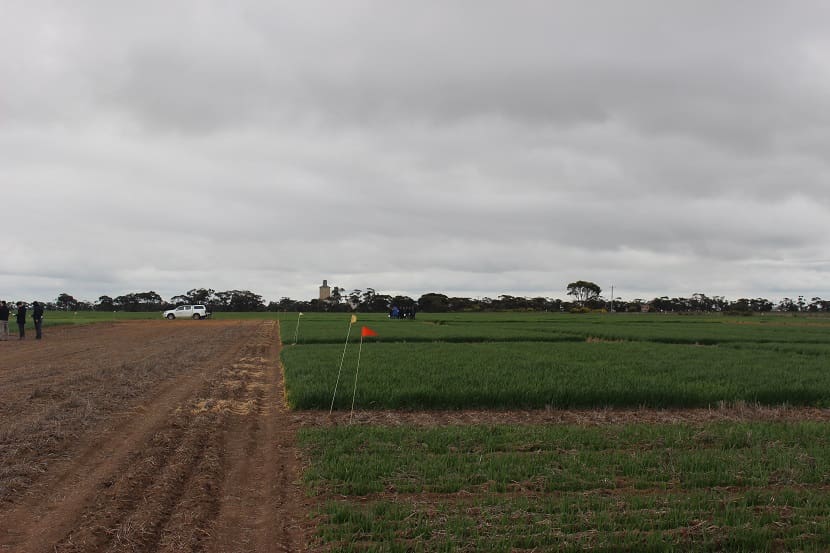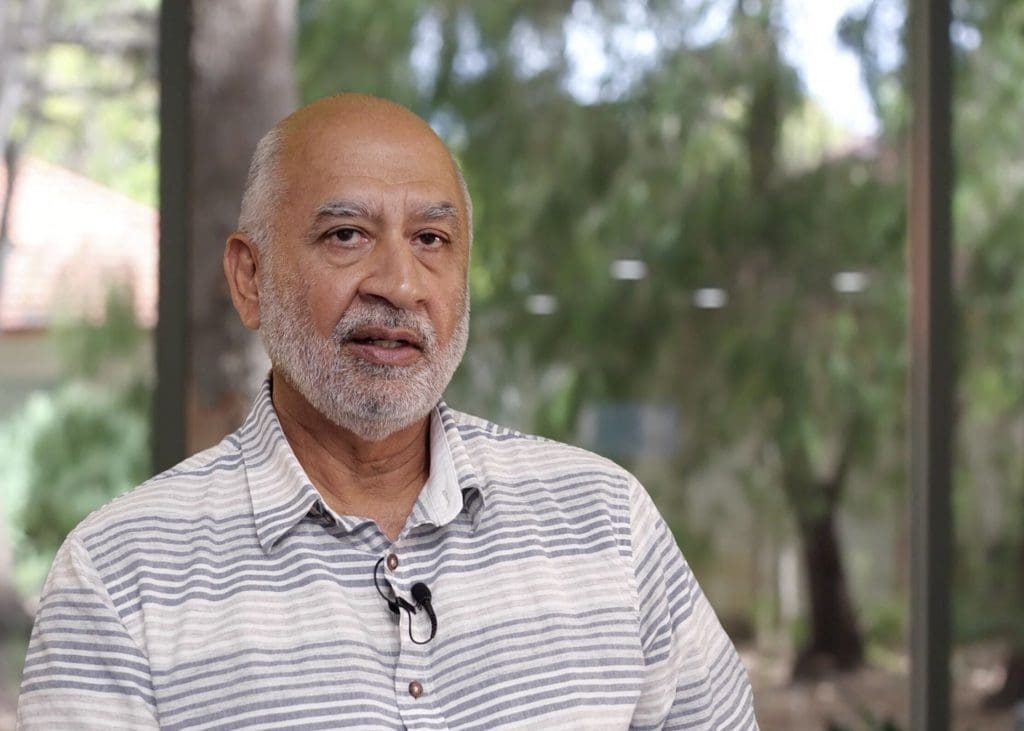
Field trials at various locations across South Australia clearly demonstrated that sowing a competitive crop ‘on time’ has better outcomes for both crop yield and suppressing seed production on annual ryegrass and brome grass. (Photo: University of Adelaide)
‘DOES delayed sowing help control weed populations?’ The answer to this question is a very simple ‘no’. Waiting for weed seeds with longer dormancy to germinate before sowing costs yield and weeds often set more seed in late sown crops.
The University of Adelaide Associate Professor of Weed and Crop Ecology, Dr Gurjeet Gill, says sowing a competitive crop ‘on time’ has better outcomes for both crop yield and suppressing weed seed production.

Gurjeet Gill
“The lack of effective in-crop herbicides leaves growers with few chemical options when it comes to controlling weeds like annual ryegrass and brome grass that are emerging later in the crop,” Dr Gill said.
“Our field trials in South Australia demonstrated that sowing ‘on time’ is the best way to maximise crop yield and suppress weeds that germinate in-crop, both with and without the use of pre-emergent herbicides.”
The time of sowing x seeding rate x herbicide field trials were conducted at several sites in South Australia in 2018 and 2019 with GRDC investment.
“The other aspect of these trials was investigating the effect of seeding rate on weed density and seedhead production,” Dr Gill said.
“Higher seeding rate increased the yield in wheat at Minnipa at both times of sowing, and did not increase screenings.”
Early sown crops consistently produce more crop and less weeds.
Why are weeds in cropping systems becoming more dormant?
Short answer: Increased cropping intensity and routine use of pre-emergent herbicides selects for the longer dormancy trait in annual ryegrass and brome grass.
Longer answer: Weed populations have a mix of individuals with different levels of seed dormancy. In self-regenerating pastures, there is likely to be a penalty for high seed dormancy and germinating later than the neighbouring plants. Therefore, high dormancy late germinating plants remain a minority in the population.
However, the situation changes when growers switch to intensive cropping where knockdown herbicides routinely kill the very early germinating plants. In such systems, weeds that emerge with or soon after the crop have a greater survival because they escape the effects of the knockdown herbicides. After several years of cropping, weed populations change from being early germinating to later germinating. These later germinating weed populations are less responsive to delayed sowing and are now common in southern farming systems.
How can I reduce the impact of these late-emerging ryegrass and brome grass weeds?
Short answer: Grow the most competitive crop possible – cultivar, seeding rate, row spacing, row orientation and time of sowing all have an impact.
Longer answer: In these trials, time of sowing was by far the major contributor to weed suppression and crop yield – even when no pre-emergent herbicide was applied.
Delaying sowing to wait for weeds to germinate after breaking rain is usually counter-productive, unless the delay results in better soil moisture conditions for pre-emergent herbicides. But even when there is a weed control benefit from the later sowing date there is likely to be a penalty on crop yield of at least 20 per cent.
This was demonstrated at the Minnipa site in 2018, where a delay in sowing of wheat reduced in-crop ryegrass density and its seed production, but there was a yield penalty of 25 to 43 per cent.
Also in 2018, the delayed sowing treatment at Marrabel, saw a large reduction in brome grass plant density in barley — however, weed seed production on these fewer plants was high. Delayed seeding also reduced barley grain yield by almost 30 per cent.
In barley, the additional in-crop use of Intervix completely prevented weed seed set at both the on-time and delayed time of sowing. As resistance to Intervix is still quite rare in brome grass, use of Clearfield® crops can be a highly effective part of the management program.
What is the effect of seeding rate?
Short answer: Higher crop seeding rate can greatly reduce weed seed production.
Longer answer: In these trials, doubling the crop seeding rate from 100 to 200 plants per m2 usually reduced weed seed production by 30 to 40 per cent. In the barley trial, the performance of the late planted crop was improved when the higher seeding rate was used.
In many other trials, very high seeding rates (such as 400 plants per m2) have been shown to vastly reduce annual ryegrass numbers. Using variable rate seeding, growers can consider sowing known weedy patches at very high seed rates (e.g. 250 to 300 plants per m2) simply to outcompete weeds.
Using a sowing rate at the upper end of the recommended range for the chosen cultivar is good practice to help support the efficacy of pre-emergent herbicides early in the season and provide strong competition for weeds that emerge later in the season.
Seed dormancy explained
Seed dormancy is usually associated with a ‘dark’ requirement, where seeds can remain dormant on the surface, where they are exposed to light, but when they are ‘planted’ the dark requirement is filled and germination follows. These weeds are the target of pre-emergent herbicides in no-till farming systems.
What growers have observed, and researchers have tested, is that some weeds remain dormant even after the dark requirement has been fulfilled, suggesting that some other trigger may be at play. In brome grass, for example, it has been demonstrated that some seeds do not germinate until a ‘cold requirement’ has been fulfilled. These weed seeds remain dormant in the soil until the night temperature reaches 4 degrees C, often well after any pre-emergent herbicide applied at seeding has degraded.
Once the weeds with the cold dormancy trait have established and set seed they can become the dominant in-crop weed pressure to impact crop yield, and future applications of pre-emergent herbicides will have a limited effect on the population.
Source: Weedsmart
Dr Gill is one of the presenters in WeedSmart’s new Diversity Era ‘Crop Competition 101’ course, which can be completed online in less than 10 hours, giving you a solid grounding in ways to effectively implement tactics that give crops a competitive advantage over weeds.
This free online course can be found at www.diversityera.com/courses/crop-competition-101
………………………………………………………..
How to ask a WeedSmart question
Ask your questions about crop competition and weed seed dormancy on the WeedSmart Innovations Facebook page WeedSmartAU, Twitter @WeedSmartAU or the WeedSmart website https://weedsmart.org.au/category/ask-an-expert/
Grain Central: Get our free daily cropping news straight to your inbox – Click here

HAVE YOUR SAY